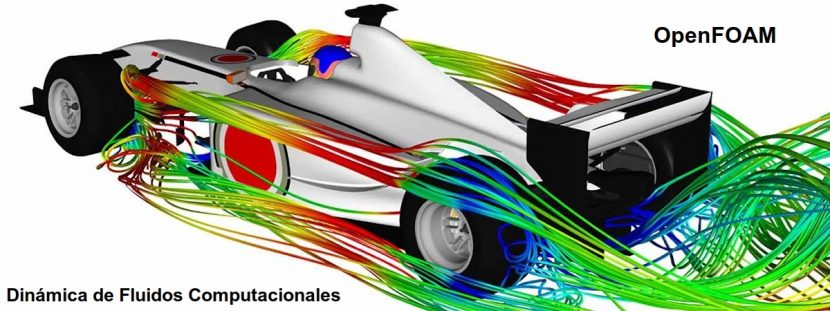
OpenFOAM: Open Source for Computational Fluid Dynamics
OpenFOAM is a Tool box (ToolBox) by Open Source and programmable, used in the Computational Fluid Dynamics (Computational Fluid Dynamics - CFD).
Besides being open, it is also price quotation and is created by the OpenFOAM Foundation. And it is distributed exclusively under the General Public License (GPL), for the benefit of all.

OpenFOAM has selected the GPL License to give program users, the freedom to modify and redistribute the software and a guarantee of continued free use, within the terms of the license. Making of the same, a excellent alternative in this field against proprietary, closed and commercial solutions.
It is worth noting that OpenFOAM was created and released by the citizen Henry weller, in the year 1989, under the name of "FOAM»And published as«OpenFOAM" by Henry Weller, Chris Greenshields and Mattijs Janssens, in December 2004. Since then, OpenFOAM it has continued to be managed and developed with new versions that are released to the public every year. And the latest stable version released is number 7.

OpenFOAM: Open ToolBox for CFDs
What is Computational Fluid Dynamics?
According to ESSS blog, website specialized in the matter, in this article, This is:
"Computational Fluid Dynamics or CFD (Computational Fluid Dynamics) is the area of knowledge that deals with the numerical simulation of fluid flows, heat transfer and related phenomena such as chemical reactions, combustion, aeroacoustics etc. The CFD originated from the combination of two disciplines: fluid mechanics and numerical calculus. The equations that govern fluid flow have their origin in fluid mechanics and can be solved by means of different numerical methods".
"Computational Fluid Dynamics is widely used in different industry segments and supports the design and manufacture of hundreds of products, such as airplanes, automobiles and ships, as well as the most diverse types of industrial equipment. Computational Fluid Mechanics can be used from the conceptual phase of a project, helping to determine the feasibility and the best product solution, up to the production stage, allowing to represent various scenarios".
What features does OpenFOAM have?
OpenFOAM has a wide range of features. Among these we can mention:
- The ability to simulate anything related to the CFD area, such as: Turbulent flows in automobile aerodynamics, up to fires and fire suppression in buildings, involving combustion, chemical reactions, heat transfer, liquid sprinklers and films .
- It includes tools for gearing in and around complex geometries (eg a vehicle), and for data processing and visualization, among others.
- Run parallel calculations as standard to take full advantage of today's multi-core processors and multi-processor computers.
Other more technical characteristics to highlight are:
Fluid Dynamics / Physical Modeling
- Turbulence modeling
- Thermophysical modeling
- Transportation / Rheology
- Many more
Data analysis
- ParaView post-processing
- Post-Processing Command Line Interface (CLI)
- Graphing and monitoring data
Geometry and meshes
- Mesh generation for complex geometries with SnappyHexMesh
- Mesh generation for simple geometries with blockMesh
- Mesh conversion tools
- Mesh handling tools
Numerical solution
- Numerical method
- Linear System Solvers
- ODE system solvers
Computing and Programming
- Equation syntax
- Function libraries
- Parallel computing
Where can OpenFOAM be obtained?
The official website of OpenFOAM It is in English but has a very intuitive and easy to explore interface. It also has other auxiliary sites with a lot of information. Then the same:

Conclusion
We hope that this "useful little post" about him «OpenFOAM», Which is a «Caja de Herramienta (ToolBox)» de open source and programmable for the study of «Dinámica de Fluidos Computacionales (Computational Fluid Dynamics - CFD)», is of great interest and utility, for the entire «Comunidad de Software Libre y Código Abierto» and of great contribution to the diffusion of the wonderful, gigantic and growing ecosystem of applications of and for «GNU/Linux».
And for more information, always do not hesitate to visit any Online library as OpenLibra y jedit to read books (PDFs) on this topic or others knowledge areas. For now, if you liked this «publicación», don't stop sharing it with others, in your Favorite websites, channels, groups, or communities of social networks, preferably free and open as Mastodon, or secure and private like Telegram.
Or simply visit our home page at DesdeLinux to read other interesting posts about «Software Libre», «Código Abierto», «GNU/Linux» and other topics related to «Informática y la Computación», and the «Actualidad tecnológica».